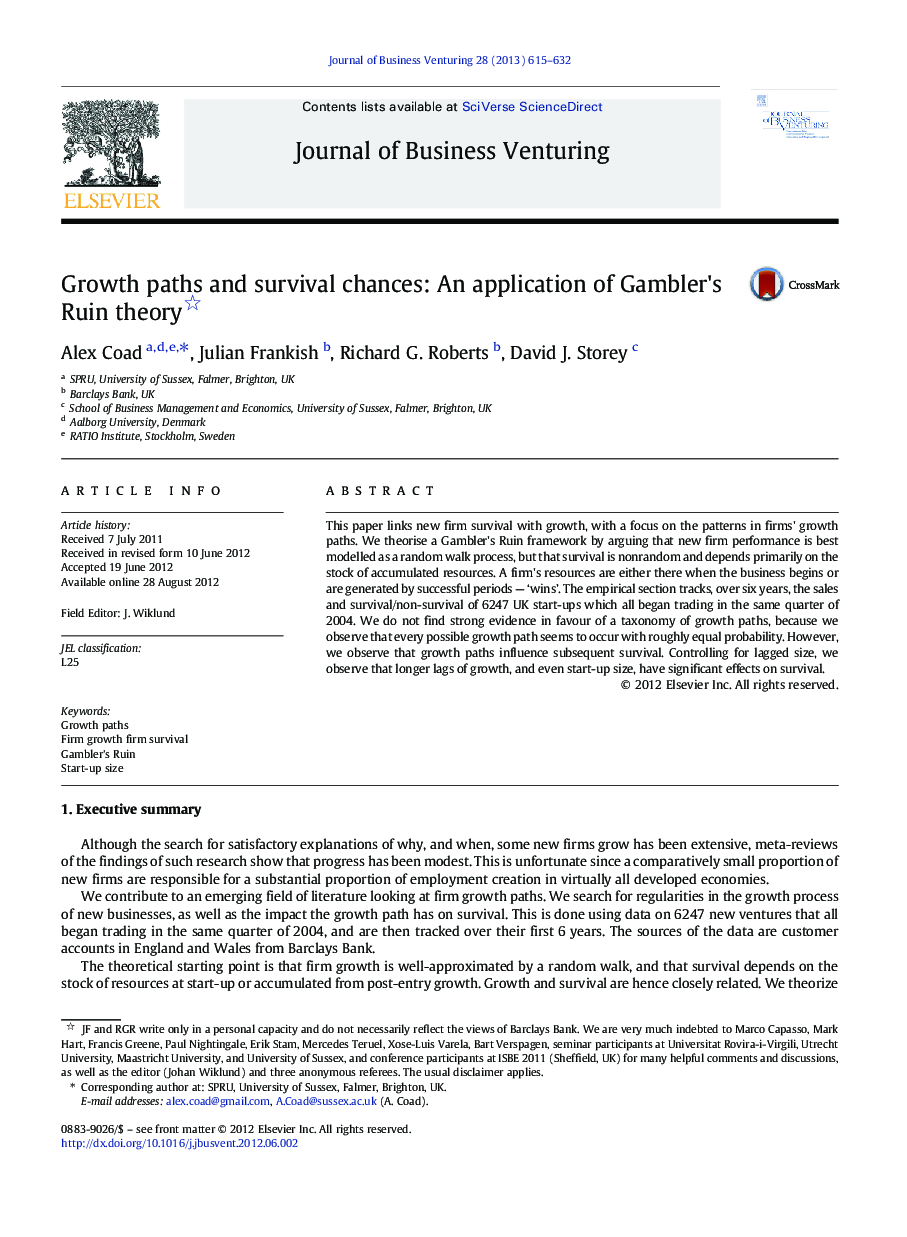| Article ID | Journal | Published Year | Pages | File Type |
|---|---|---|---|---|
| 1019390 | Journal of Business Venturing | 2013 | 18 Pages |
This paper links new firm survival with growth, with a focus on the patterns in firms' growth paths. We theorise a Gambler's Ruin framework by arguing that new firm performance is best modelled as a random walk process, but that survival is nonrandom and depends primarily on the stock of accumulated resources. A firm's resources are either there when the business begins or are generated by successful periods — ‘wins’. The empirical section tracks, over six years, the sales and survival/non-survival of 6247 UK start-ups which all began trading in the same quarter of 2004. We do not find strong evidence in favour of a taxonomy of growth paths, because we observe that every possible growth path seems to occur with roughly equal probability. However, we observe that growth paths influence subsequent survival. Controlling for lagged size, we observe that longer lags of growth, and even start-up size, have significant effects on survival.
► We investigate the growth and survival of nascent businesses by analyzing their bank records. ► We do not find strong evidence in favour of a taxonomy of growth paths. ► Every possible growth path seems to occur with roughly equal probability. ► We observe that survival depends on the business' growth path. ► Even when controlling for lagged size, lagged growth has significant effects on survival.
